I am trying to fit an exponential law into my data. My (x,y) sample is rather complicated to explain, so for general understanding and reproducibility I will say that: both variables are float and continuous, 0<=x<=100, and 0<=y<=1.
from scipy.optimize import curve_fit
import numpy
import matplotlib.pyplot as plt
#ydata=[...] is my list with y values, which contains 0 values
#xdata=[...] is my list with x values
transf_y=[]
for i in range(len(ydata)):
transf_y.append(ydata[i]+0.00001) #Adding something to avoid zero values
x=numpy.array(xdata,dtype=float)
y=numpy.array(transf_y,dtype=float)
def func(x, a, c, d):
return a * numpy.exp(-c*x)+d
popt, pcov = curve_fit(func, x, y,p0 = (1, 1e-6, 1))
print ("a = %s , c = %s, d = %s" % (popt[0], popt[1], popt[2]))
xx = numpy.linspace(300, 6000, 1000)
yy = func(xx, *popt)
plt.plot(x,y,label='Original Data')
plt.plot(xx, yy, label="Fitted Curve")
plt.legend(loc='upper left')
plt.show()
Now my fitted curve doesn't look anything like a fitted exponential curve. Rather, it looks like a moving average curve as if such curve was added as a trendline on Excel. What could be the problem? If necessary I'll find a way to make the datasets available to make the example reproducible.
This is what I get out of my code (I don't even know why I am getting three elements in the legend while only two are plotted, at least apparently):

